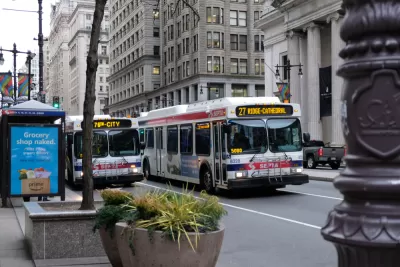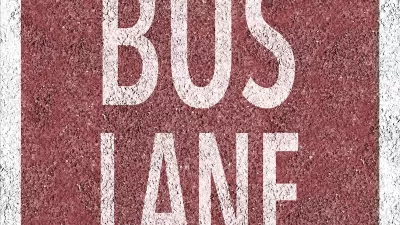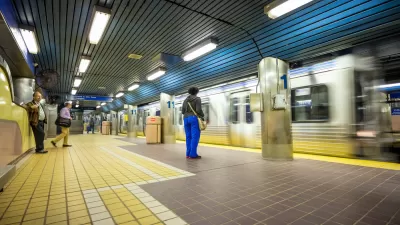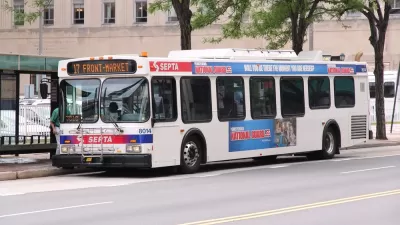A pilot program revealed roughly 4,000 instances of vehicles blocking bus lanes or bus stops every week.

Since late April, the Southeastern Pennsylvania Transportation Authority (SEPTA) has been monitoring bus lanes and bus stops on two routes via bus-mounted cameras, documenting 4,000 average violations per week, according to an article by Thomas Fitzgerald in The Philadelphia Inquirer.
The agency did not issue any citations, but used the experiment as an opportunity to study the impact of bus lane blockages on transit speed and reliability. “Buses navigating Philadelphia traffic average a speed of 8 mph, SEPTA says, slower than the national average of about 14 mph. Every year, congestion in Center City causes 1.7 million hours of passenger delays and adds $15.4 million to the transit agency’s operating costs, according to a 2019 Econsult Solutions study commissioned by SEPTA.”
The agency will weigh whether to create an enforcement program for bus lane violations, which has shown positive results in New York. As Fitzgerald explains, after beginning to enforce bus lane blocking violations, New York’s MTA reported “big increases in travel speed on some routes and a 30% drop in bus crashes on one major route because operators don’t have to swing into the traffic lane to avoid obstacles as often.”
FULL STORY: SEPTA found more than 20,000 violations in a study on blocking bus-only lanes and bus stops

Study: Maui’s Plan to Convert Vacation Rentals to Long-Term Housing Could Cause Nearly $1 Billion Economic Loss
The plan would reduce visitor accommodation by 25,% resulting in 1,900 jobs lost.

North Texas Transit Leaders Tout Benefits of TOD for Growing Region
At a summit focused on transit-oriented development, policymakers discussed how North Texas’ expanded light rail system can serve as a tool for economic growth.

Why Should We Subsidize Public Transportation?
Many public transit agencies face financial stress due to rising costs, declining fare revenue, and declining subsidies. Transit advocates must provide a strong business case for increasing public transit funding.

How to Make US Trains Faster
Changes to boarding platforms and a switch to electric trains could improve U.S. passenger rail service without the added cost of high-speed rail.

Columbia’s Revitalized ‘Loop’ Is a Hub for Local Entrepreneurs
A focus on small businesses is helping a commercial corridor in Columbia, Missouri thrive.

Invasive Insect Threatens Minnesota’s Ash Forests
The Emerald Ash Borer is a rapidly spreading invasive pest threatening Minnesota’s ash trees, and homeowners are encouraged to plant diverse replacement species, avoid moving ash firewood, and monitor for signs of infestation.
Urban Design for Planners 1: Software Tools
This six-course series explores essential urban design concepts using open source software and equips planners with the tools they need to participate fully in the urban design process.
Planning for Universal Design
Learn the tools for implementing Universal Design in planning regulations.
Ascent Environmental
Borough of Carlisle
Institute for Housing and Urban Development Studies (IHS)
City of Grandview
Harvard GSD Executive Education
Toledo-Lucas County Plan Commissions
Salt Lake City
NYU Wagner Graduate School of Public Service





























